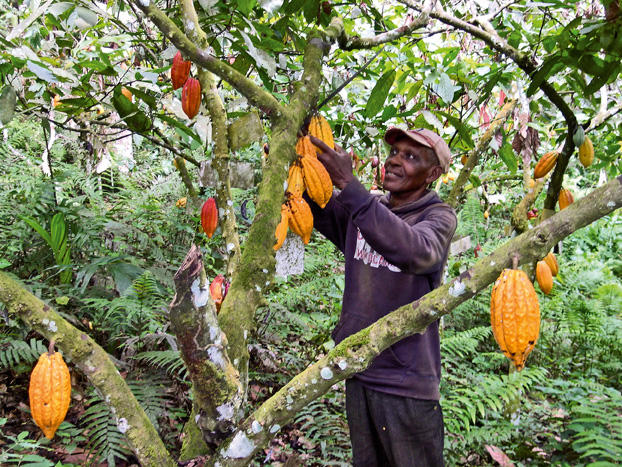Climate change, due primarily to burning oil, coal, and methane gas, is causing hotter temperatures to become more frequent in the four West African countries responsible for producing approximately 70% of the world’s cacao – the key ingredient in chocolate.

Cocoa prices have risen 400% in recent years as study shows climate change made 2023 heatwave in West Africa 10 times more likely.
Indeed, during the past decade, global warming has increased the number of days above the ideal cocoa growth temperature range in West African growing regions by two to four weeks annually – mostly during the main crop cycle.
This is one of the outcomes of an analysis by Climate Central, which entails how warming temperatures, attributed to climate change, affected the number of days with maximum temperatures above 32°C during the main and mid-crop cycles in Cameroon, Côte d’Ivoire, Ghana, and Nigeria over the past 10 years (2015-2024).
Findings indicate that temperatures beyond the optimal range for cacao growth are becoming more common in West Africa’s cocoa belt, particularly during the main crop harvest season, compared to a world without climate change.
Beyond intensifying heat, climate change is also altering rainfall patterns in West Africa – an important factor in cacao growth – and contributing to soil degradation, further straining cacao production. However, rising temperatures and changing rainfall patterns are just two of the factors at play. Illegal mining, smuggling, and the spread of cacao swollen shoot virus through mealybug infestations are also significantly impacting the quantity and quality of cacao harvests, driving up chocolate prices and compounding challenges for farmers.
The study also found that nearly all the analysed cacao-producing areas in West Africa saw at least three additional weeks’ worth of days above 32°C added by climate change each year during the past decade – but many experienced much more.
Out of the analysed temperature data in 44 cacao-producing districts, regions, or states across West Africa in Cameroon, Côte d’Ivoire, Ghana, and Nigeria, nearly all areas (43) saw at least three weeks’ worth of days above the optimal temperature range for growing cacao added each year due to human-caused warming.
In 2024, more than two-thirds of cacao-producing states or regions analysed in West Africa saw at least six additional weeks’ worth of days above 32°C.
Additionally, climate change added more days above the optimal temperature range during the main crop cycle than during the mid-crop cycle across nearly all cacao-growing regions in 2024.
For instance, the number of days above 32°C added by climate change during the mid-crop cycle was greater than the days added in the main crop cycle in only five areas: Imo, Oyo, Kogi, and Kwara in Nigeria; and Bono East in Ghana.
Other factors impacting cocoa production in West Africa were listed to include inconsistent rainfall patterns, invasion by Mealybugs insects and cacao swollen shoot virus (CSSV), as well as smuggling and illegal mining,
In a reaction, Director of Power Shift Africa, Mohamed Adow, weighs in on the issue, saying: “This is another example of the African livelihoods that are coming under threat from the extreme weather caused by carbon pollution. That is why we need to see more rapid roll-out of clean, renewable energy, and more targeted financial support for African farmers to help them adapt.”
International charity, Christian Aid, is warning that chocolate and the livelihoods that depend on it are at risk and is calling for action to cut emissions and target climate finance going to cocoa growers to help them adapt.
Chocolatiers are likewise feeling the heat: “It’s a nightmare, I don’t think any business involved in chocolate has avoided this impact, and it’s all down to climate change,” said Andy Soden of Kernow Chocolate.
